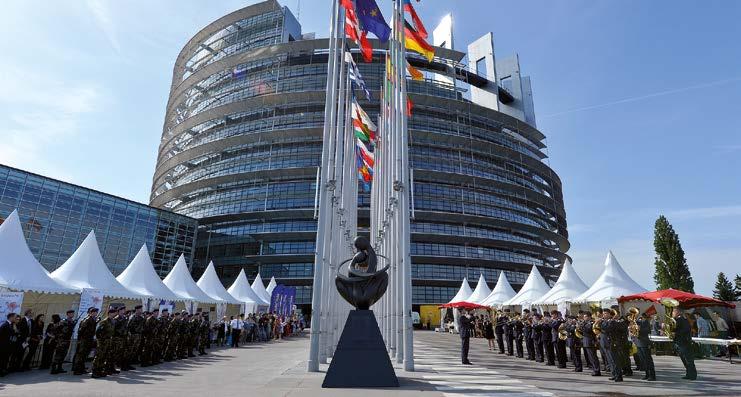THE EUROPEAN – SECURITY AND DEFENCE UNION
We can find European solutions that work
photo: private
Borders, migration and refugee policy – how Europe fails
A paradox lies at the heart of the current debate on migration in Europe. The number of people arriving irregularly across the Mediterranean in 2018 has fallen sharply in comparison with 2015. This has led some to argue that the “refugee crisis” is over and that the EU has learned its lessons. However, populists ideologically long opposed to the European Union itself and who blame “Brussels” have done well in a string of national elections in 2018. They paint the picture of a looming threat which only drastic policy measures can contain. What is the reality of Europe’s current migration crisis? Is there a crisis at all? We asked the founding chairman of the European Stability Initiative (ESI), Gerald Knaus, who is travelling around Europe presenting proposals for a “humane, implementable policy on borders.” In 2015, his think tank suggested the blueprint for what became, in March 2016, the EU-Turkey statement that drastically reduced arrivals by boat in the Aegean.
Interview with Gerald Knaus, Founding chairman, European Stability Initiative (ESI), Berlin The European: Mr Knaus, in September 2015 you warned that the loss of control at the EU’s external border in the Aegean was unsustainable and suggested that the best way to reduce irregular arrivals in line with international law was an agreement between Germany and Turkey. This became EU policy six months later. In June 2018, you suggested European reception centres in Spain to reduce the number of irregular arrivals. How confident are you that this time, too, your idea might be adopted? It does not look likely at the moment. Gerald Knaus: The situation in the Western Mediterranean today is like a magnifying glass, where we see everything that is wrong in European debates and policies. First, the total number of people who crossed the Mediterranean this year – to Spain, Italy and Greece – is less than 300 a day in the first nine months. This is a sharp decrease and no unmanageable invasion. However, 2018 will also have seen around 60,000
24
people cross the sea only to Spain, which is more than in any year in the past two decades! Three years ago, only one tenth of this number arrived in Spain by boat, and neither the Spanish reception system nor the asylum system can cope. Also, nobody has any plan regarding what to do. Europe has lost control, again. The European: You suggested European reception centres in Spain. How would this help? Gerald Knaus: What Spain needs today is the ability to send back those who arrive and who do not need protection, and to do so quickly to reduce the incentive to come. Currently it is almost impossible to send even the smallest number back to their countries of origin. It requires an asylum system that can make decisions that are fair and fast, and agreements that work. The European: Could any asylum system cope with such arrivals? Gerald Knaus: In 2017 the total number of first instance decisions in Spain was 13,300 and still there was a huge backlog at

















